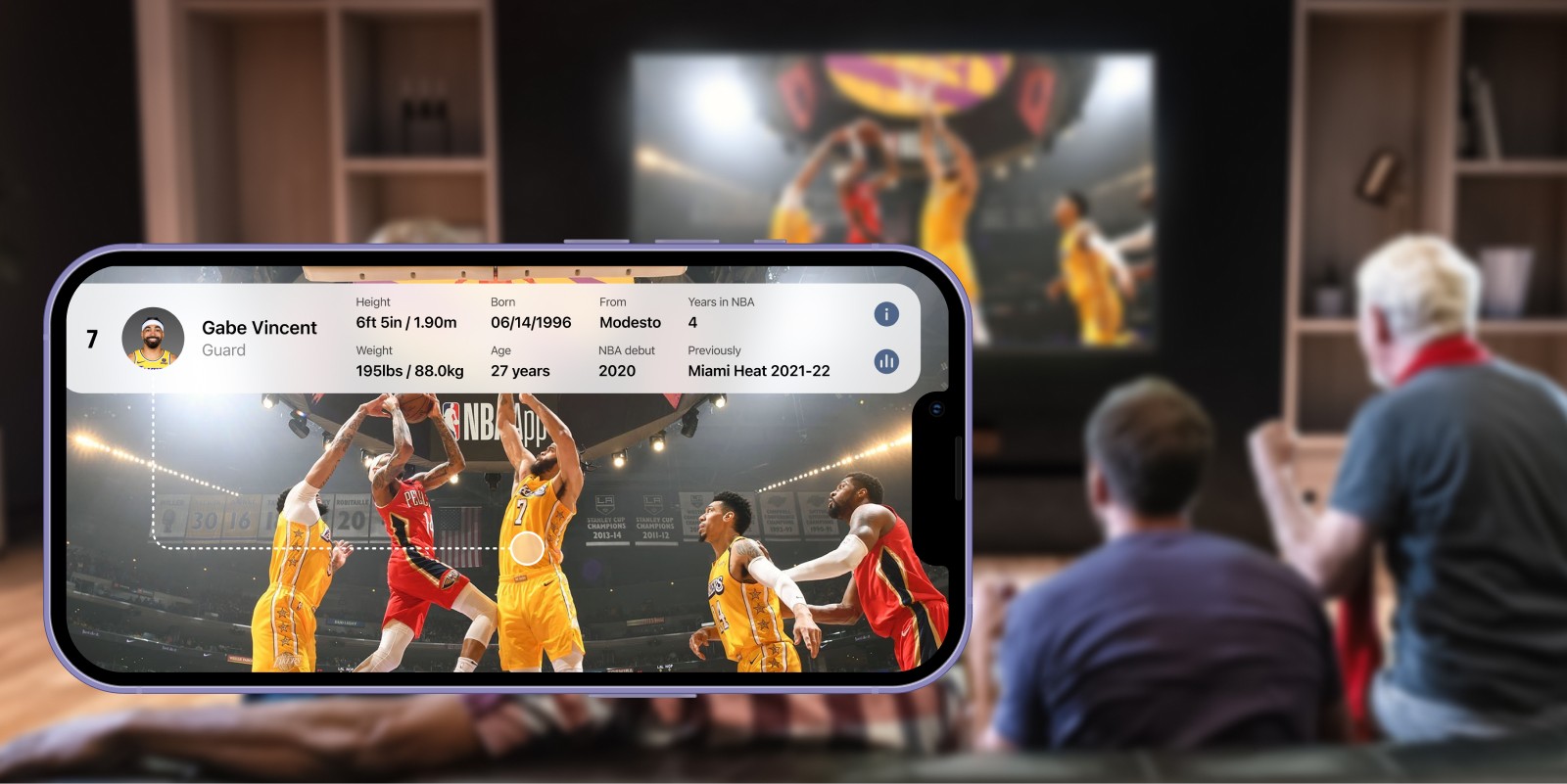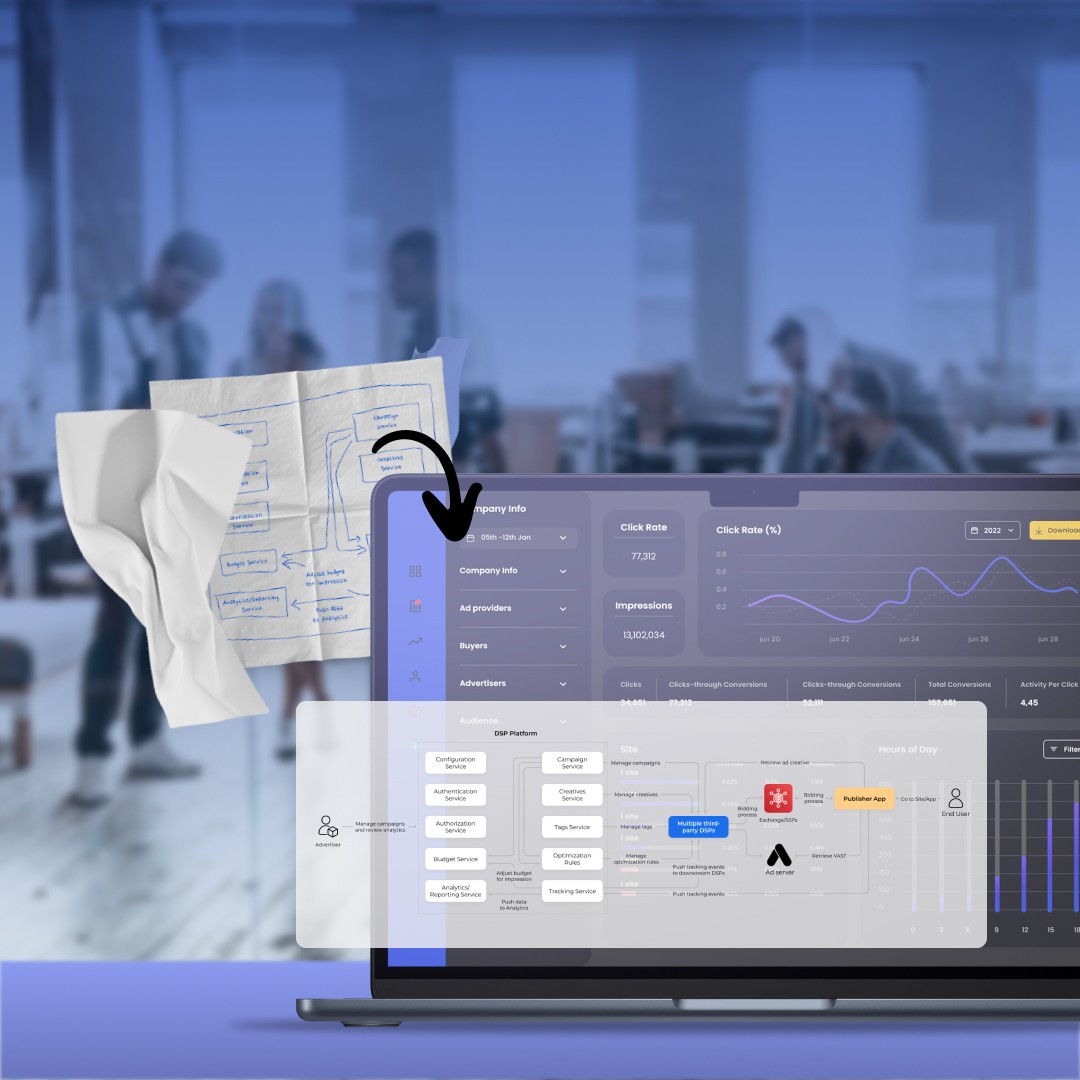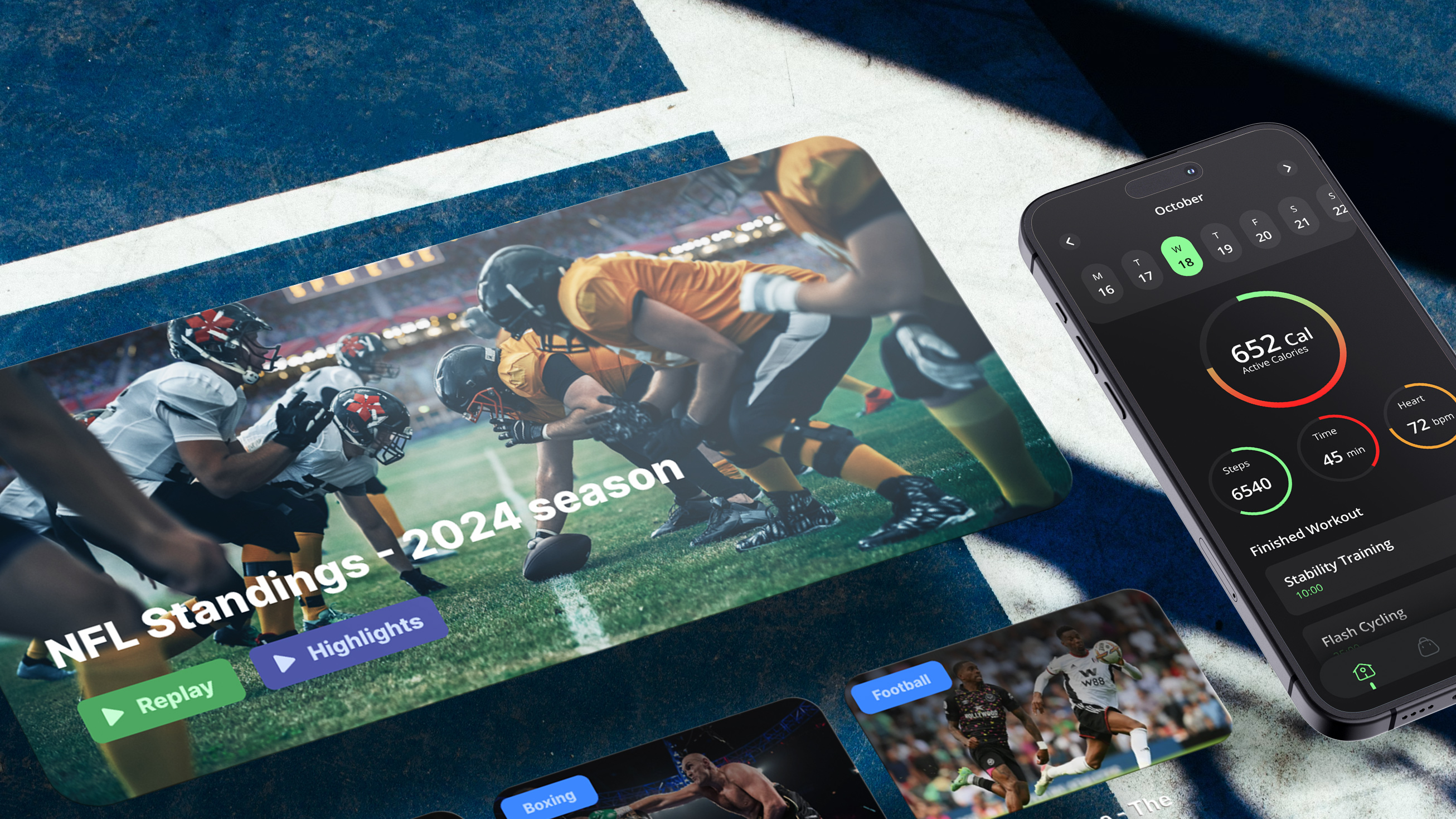3 Streaming trends empowered by events we attended
In a Q1 2025 survey conducted by IABM’s Business Intelligence Unit, leading MediaTech executives voiced a clear and loud consensus on which technologies are driving their transformation: artificial intelligence and machine learning (72%), cloud computing (65%), and — cue the spotlight — OTT and streaming platforms (58%).
The translation is unmistakable: streaming in 2025 is a major catalyst for innovation, expansion, and new revenue opportunities.
To studios, streaming providers, and distributors who are locked in a high-stakes battle for audience attention — not just against each other, but now against social platforms and creator-driven ecosystems as well — while trying to keep up with the relentless wave of new technologies and the ever-present question, “What’s coming next?” — this article provides the clarity. At least when it comes to that last question. (As for the rest — we’ve charted those territories far and wide.)
We’ve been on the ground and online at the industry’s key touchpoints — tracking the pulse of streaming innovation and decoding what’s next. Here’s where we’ve been collecting signals that matter:
- ANGA COM in Cologne,
- The virtual Data-Driven Video Summit,
- London Tech Week 2023,
- IBC 2023 in Amsterdam,
- The NAB Show in Las Vegas.
Alongside our colleagues, we’ve distilled the insights, filtered the noise, and spotlighted the OTT industry trends. And here’s what’s just around the corner.
1. Personalization will define a viewer’s loyalty to the video streaming service

What’s in demand today?
“Personalization is not only about content, but also about the ability to discover it in the way a user would desire. A great custom user experience within streaming platforms feels intuitive for viewers. It shouldn’t take too much effort to leverage streaming services that are customized but do not seem user-friendly. Intuitiveness should be part of a user experience and interface.”
What technology will drive the trend? Spoiler: Artificial intelligence
AI will be the major innovation, boosting video user engagement by customizing watching paths through advanced recommendation algorithms. Speaking about streaming platforms, there is a use case that will be a priority for video streaming services: putting the recommendation system to a new level.
What do we have now? On-demand video platforms can bring content to viewers before they actually know what they are looking for. The existing OTT solutions blend easy content discovery into the UX based on viewing preferences and habits.
What is a viable use case in the near future? Building content recommendations is no longer enough if you aim to engage users and retain their attention. You should be able to integrate a personalized UX into an interface, for example:
- Suggest collaborative filters that recommend shows and movies based on similar interests related to other viewers.
- Give users a chance to choose personalization settings, like offering you content generated only with an eye on trends, watching lists, locations, or combining several criteria.
How we can help
Explore our expertise in front-end development for video streaming solutions and get to know how we can transform the UX/UI of your OTT platform.
2. Iterative data warehousing will be at the heart of a single source of truth for business operations


What’s in demand today?
“The main challenge for the media streaming industry is data sources. They have too many of them to extract data from, with different levels of data quality and data sets collected from multiple devices. For fast experimentation, they need a reliable single source of truth they can easily access, rely on, react to, using the insights grabbed from data.
Data privacy regulations are another challenge. The success of video streaming services depends on personalization, and the task is to follow the data protection laws but not kill this personalization because of strict legislation. A consumer needs to understand why data is collected. If it does not add value to video consumption services, he or she wouldn’t be willing to share their preferences or other info. The difficulty is all about ensuring transparency in data gathering. They need to realize that the data will be used to improve their viewing experience. Building awareness of why data needs to be collected would be a priority.”
What technology will drive the trend? And what strategic approach will win?
Further reading: Data warehouse implementation (Components, steps, and benefits)
Find the questions that may concern you about data warehousing answered by Oxagile’s data engineer. The insights are based on the specialist’s real project experience.
Data warehousing will become the lifeline for the video streaming industry. Establishing a centralized data lake enables a single source of truth, serving as the foundation for multiple operations like marketing, sales, and production. However, the evolving needs for data define the iterative approach to building them. Though big companies have departments with smaller data lakes, they strive to build a huge, unified semantic layer on top of that. Growing it iteratively allows them to be flexible in meeting current data needs.
Why may streaming service providers require data warehousing? First, it’s data about content consumption, like the number of people who viewed or accessed films or TV shows, etc. This gives the grounds for reporting to content creators who analyze the information to assess the effectiveness of distribution campaigns.
Speaking about OTT streaming platforms and VoD services, content aggregators worry about getting more valuable insights into the profitability of their services. How to drive more subscribers and retain the current users? Data warehouses will be the golden source of the answers to those questions. Additionally, a centralized data lake may significantly enhance collaboration between business departments, synchronizing the insights within an overall business strategy. All these scenarios will make OTT platform owners do more to educate people on why data sharing is a must for VoD services, building brand trust and acting within data privacy guidelines.
3. Automation will be the foundation for sustainable services of broadband companies

What’s in demand today?
“Struggling to meet sustainability standards, broadcast companies moved from copper to fiber, which consumes much less energy than copper by transmitting data using light. Fiber networks don’t need constant power to operate, compared to copper networks powered by electricity. All this provides better conditions for broadband providers to go green. Efficient fiber deployment at all stages is a new trend for sustainable broadband services.”
What technology will drive the trend? A hint: there’s been much hype about it
The major obstacle to fast optical fiber deployment is the planning stage of the entire rollout process. The phase includes the creation of the fiber deployment layout based on static data about the infrastructure. Due to regular infrastructure changes, the execution of the plan is frequently altered, causing rollout delays. Thus, planning is a significant challenge for broadband companies, and automation and real-time infrastructure data can be turning points for optimized planning.
Fiber automation seems to be the best means of streamlining the process of fiber deployment. How can it be achieved? For example, advanced computing technologies like LiDAR (Light Detection and Ranging), artificial intelligence, and ML-based algorithms speed up fiber rollout planning and boost its accuracy and efficiency. Tools enabled by the above-mentioned innovations automatically generate layouts by capturing geolocations and filtering possible fiber layout factors, including ducts, trenches, underground, etc. These advanced automated techniques will help reduce the fiber deployment planning time as well as the environmental impact of extra rollout processes caused by project delays.
3 Fresh OTT trends brought straight from NAB Show 2025
NAB Show 2025 delivered a packed agenda — and one standout moment was IABM’s presentation of its latest State of MediaTech report, offering a sharp perspective on where the industry is heading.
We paired those insights with our own on-the-ground observations to surface a few more of the most relevant, high-impact OTT market trends.
4. FAST will be rapidly expanding, integrating major live events, and attracting millions of new viewers

One of the general trends in video streaming is that subscription-only is going to be out. The future lies in flexible revenue models—mixing AVOD, SVOD, FAST, and transactional strategies to meet diverse viewer preferences and market demands.
At the forefront of this change is the rapid rise of free advertising-supported streaming television (FAST) availability. As of mid-2024, leading platforms like Plex, Freevee, The Roku Channel, and Pluto TV have significantly expanded their channel lineups — some offering over 500 channels — signaling a strong shift toward lean-back viewing experiences that simplify content discovery and mimic the familiarity of traditional TV.
Notably, major live events are becoming accessible via FAST for the first time. In 2025, Tubi streamed the Super Bowl, adding 13.6 million viewers to the total audience. This contributed to an overall viewership of 127.7 million, marking a 3.2% year-over-year increase.
As FAST services continue to grow, the focus on quality of service, content discovery, and recommendation systems will be crucial for success.

What’s in demand today?
“With rising competition in the FAST market, implementing advanced personalization strategies will be key. By leveraging AI and machine learning to analyze viewer preferences — such as demographics, viewing history, and contextual data like time of day or device type — platforms can deliver tailored content recommendations and targeted ads. By leveraging audience analytics and segmentation, FAST platforms can enhance user satisfaction, making ad-supported content feel less intrusive and more relevant. Dynamic ad insertion (DAI) plays a crucial role, ensuring ads align with viewer interests rather than disrupting the experience. This approach transforms advertising into a value-added feature, increasing engagement and retention.
As FAST continues to expand, platforms that prioritize content discovery, recommendation systems, and ad personalization will lead the market. The ability to deliver a seamless, customized experience will determine which services attract and retain the largest audiences in the evolving streaming landscape.”
5. Social media will dominate as the most popular activity for Gen Z in media consumption

A significant trend in media consumption is the dominance of social media as the preferred activity for Gen Z, shaping how younger audiences engage with entertainment. Data on daily average hours of North American media and entertainment activities by generation reveals that Gen Z spends 1.4 hours per day on social media, the highest among all activities for this group, contributing to their total of 6.9 hours daily across media. In comparison, Millennials spend 1.1 hours, Gen X 0.5 hours, and Boomers 0.3 hours on social media. Meanwhile, older generations like Gen X, Boomers, and Matures allocate more time to video content, with 2.1, 2.3, and 2.3 hours respectively across platforms, underscoring a generational divide in media habits. For Gen Z, social media is not just a pastime but a central hub for connection and content discovery, driving new habits that increase overall daily media consumption.
What’s in demand today?
“Given that Gen Z practically lives on social media, platforms should capitalize on this trend to boost engagement during live streams. By integrating community-driven features like real-time chats and companion device experiences, such as enabling users to connect their social accounts via QR codes for seamless interaction, platforms can create a more immersive experience. For instance, incorporating social media feeds directly into live sports streams — allowing fans to view real-time reactions, polls, or player stats — can deepen engagement. Additionally, offering gamified elements like trivia or prediction games linked to social profiles can encourage participation, fostering a sense of community and keeping Gen Z hooked in an environment where they already spend a significant portion of their day.”
6. AI as an analytics solution will continue to grow

The media technology sector is witnessing a significant trend with the continued growth of AI and machine learning (ML) as critical analytics solutions, maintaining their position as the top priority in technology roadmaps. According to a 2025 survey by IABM, 60% of respondents identified AI & ML as a key focus in their technology roadmaps, up from 49% in 2024, with 26% citing it as their main priority. Additionally, analytics and personalization, closely tied to AI capabilities, were highlighted by 33% of respondents as a developing area of interest, reflecting a growing need for granular tracking of viewer data. This trend underscores the industry’s shift towards leveraging AI to enhance operational efficiency and deliver tailored viewer experiences. Other priorities like OTT & streaming platforms (46%) and cloud computing (43%) follow, but AI’s dominance signals its pivotal role in shaping the future of media technology.
What’s in demand today?
“AI can enable dynamic content recommendations by analyzing viewer preferences, such as genre interests or watching habits, ensuring users receive suggestions that align with their tastes. Additionally, AI-powered interactive live streaming solutions can enhance engagement through features like real-time polls and quizzes tailored to individual viewers, or automated highlight generation that curates key moments based on user behavior. AI also facilitates adaptive bitrate streaming, adjusting video quality in real-time based on a viewer’s network conditions, ensuring a seamless experience.”
7. Engaging sports fans will be one of the major streaming trends in the domain

What’s in demand today?
“Sports fans now expect more than just passive viewership during the live streaming of sports events. They want to actively participate, connect with fellow fans, and have a sense of belonging. The demand for personalized, interactive, and social experiences has skyrocketed. Fans want to feel the excitement, emotions, and camaraderie that come with being part of the game.”
What will drive the trend? Not a particular technology, you know
In this digital era, sports organizations will prioritize UX tricks to captivate and retain fans’ attention. By simplifying navigation, enabling real-time interactivity, and personalizing live and on-demand streaming experiences, sports organizations can create immersive environments that cater to the demands of sports fellows. By refining the user experience on their streaming services and the platform interfaces, sports organizations can forge deeper connections with their fan base.
For instance, fans are happy to actively participate during live streaming events and share their emotions with fellow enthusiasts. Offering real-time interactive features, such as live polls, social media integrations, and chat functionalities, allows fans to engage with each other, express opinions, and feel connected to the larger community.
Highlights published after live broadcasts will support the engagement scenario. The integration of AI into post-viewing highlights has transformed the way sports fans interact with the game. By harnessing AI algorithms and facial recognition technology, sports organizations can curate hyper-specialized moments, offering fans a personalized experience like never before. Gone are the days of generic compilations; now, fans can watch curated highlights tailored to their specific interests. Whether it’s showcasing a particular team’s defensive prowess or capturing the brilliance of an individual player, AI-powered highlights deliver a personalized and immersive viewing experience.
Final thoughts
It’s time to think about how video market stakeholders can respond to the evolving streaming trends. If you are interested in integrating these innovations into your business, contact Oxagile to find out how we can help you.






























